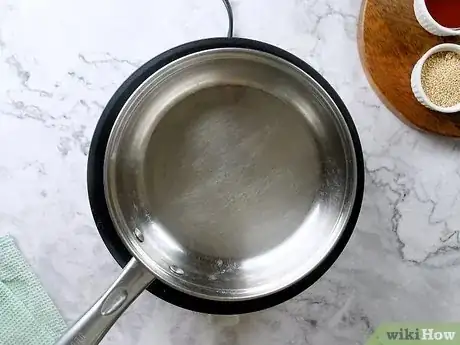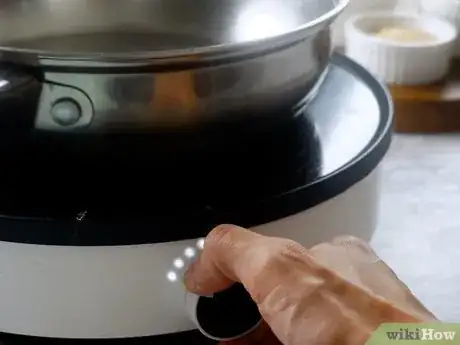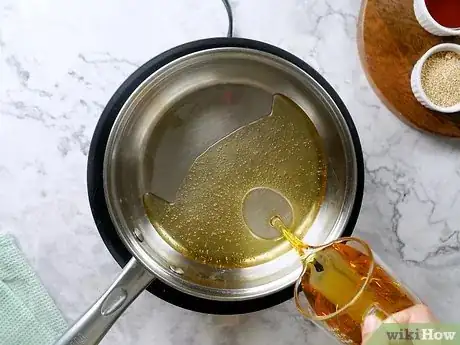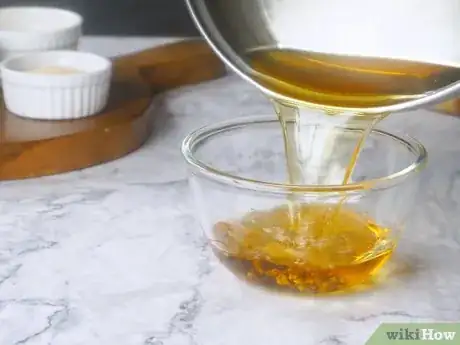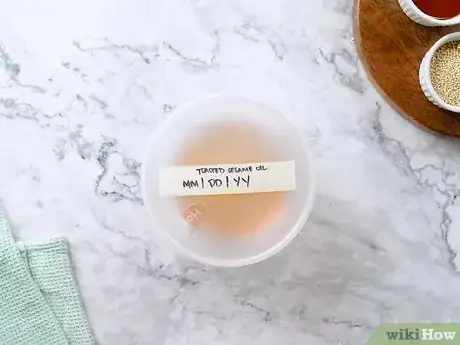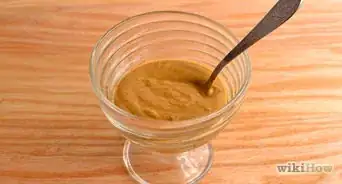wikiHow is a “wiki,” similar to Wikipedia, which means that many of our articles are co-written by multiple authors. To create this article, volunteer authors worked to edit and improve it over time.
The wikiHow Culinary Team also followed the article's instructions and verified that they work.
This article has been viewed 180,789 times.
Learn more...
Sesame oil is a plant-based oil that is traditionally used in place of butter and other saturated fats in cooking and baking. While several varieties of sesame oil exist, the two most common include oil which is cold-pressed and that which is toasted. Due to the increased labor associated with it, toasted sesame oil is usually much more expensive than that which is cold-pressed. Learning how to toast sesame oil, therefore, not only helps you save money, but can dramatically improve your health and well-being.
Steps
-
1Prepare the pan in which the sesame oil is to be toasted by cleaning and drying it thoroughly.
-
2Warm the pan.
- Place the clean, dry pan on a stove top burner set to medium heat. It is important to use a hot pan to toast the oil.
- Ideally, you should be able to feel heat radiating from the surface of the pan before you pour in the oil. Hold your hand a few inches above the pan. If you can only hold your hand in this position for a few seconds before the temperature becomes too much, the pan is ready for toasting.
Advertisement -
3Pour the cold-pressed sesame oil into the pan.
- Start by pouring a small amount of the sesame oil into the heated pan. Carefully grip the handle of the pan with your dominant hand, and slowly rotate the pan from side to side. Keep the liquid moving during its entire cooking time to prevent possible burning of the sesame oil. The sesame oil is properly toasted when it acquires a golden brown color. In addition, a rich, nutty scent will begin to develop. When this occurs, remove the pan from the heat source.[1]
-
4Transfer the hot oil carefully into a glass bowl, and allow the oil to cool to room temperature.
- If you want to toast more oil than the pan can accommodate at one time, you can repeat the process until you have prepared the desired amount.
-
5Store the sesame oil.
- After all of the toasted oil has reached room temperature, it can be placed in an airtight container. This container can be kept in the refrigerator for up to 1 year. Be sure to put a label on the container indicating the product and its preparation date.[2]
Community Q&A
-
QuestionIs sesame oil used to make salad dressing?Sesame oil can be used in salad dressing; you just don't need as much as you would use if you were using olive oil. You can mix it with a oil with little flavor such as vegetable oil or rice bran oil. Make and test your dressing before you pour it over your salad.
Things You'll Need
- Metal pan
- Airtight container
- Marker
- Refrigerator/freezer
References
About This Article
While toasted sesame oil is a great alternative to butter and other saturated fats, it is much more expensive than regular sesame oil. Improve your health and save some money by toasting your own sesame oil at home! First, heat a pan on the stovetop on medium heat. Once the pan has heated up completely, pour the cold-pressed sesame oil into the pan. Spread the oil in the pan by carefully gripping the handle of the pan with your dominant hand, and slowly rotating the pan from side to side. Keep the oil moving during its entire cooking time to prevent possible burning. Once the oil acquires a golden brown color, it is properly toasted.You should also notice that a rich, nutty scent will begin to develop. When this occurs, remove the pan from the heat. Carefully transfer the hot oil into a glass bowl, and allow the oil to cool until it reaches room temperature. After the oil has reached room temperature, it can be placed in an airtight container to store. This container can be kept in the refrigerator for up to 1 year. Be sure to put a label on the container with its preparation date.
